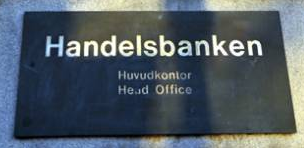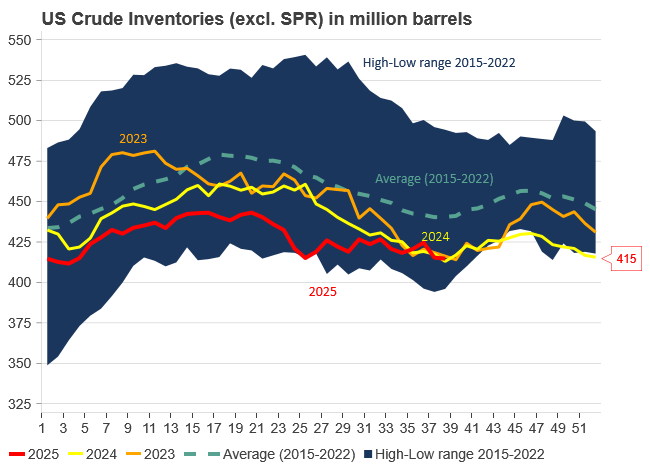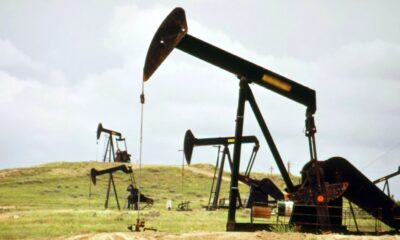Analys
SHB Veckans Jordbrukskommentar – 28 januari 2016

 Vete
Vete
Terminspriserna på vete i både Paris och Chicago steg inledningsvis i veckan men har nu åter fallit tillbaka. Som vanligt när Ryssland nämner eventuella förändringar i exportskatt på spannmål så blir marknaden snabbt nervös och handlar upp priset. Vad Ryssland vill åstadkomma är dock att dämpa inhemska priser på foderspannmål som på grund av en svag rubel är nära rekordhöga nivåer, detta genom att höja exportskatt på majs och korn – inte för vete som de faktiskt talar om att sänka eller helt ta bort exportskatten för. Ej att förglömma är att rysk exportvolym för majs och korn är väldigt liten i förhållande till exportvolym vete. Med en svag rubel och väldigt mycket vete kvar att exportera, klart mer än föregående säsong, kommer Ryssland fortsatt stå sig väldigt väl i konkurrensen och vi ser effekterna av eventuella förändringar i exportskatter endast som en inhemsk fördelningspolitisk fråga utan större effekt på omvärlden.
Vädermässigt inte mycket att rapportera om för vetet. Europa är ovanligt varmt för säsongen, så även stora delar av USA:s veteregioner. Inte heller i Ryssland och Ukraina finns väderproblem att tala om och tiden för eventuella vinter- och väderrelaterade bakslag blir allt kortare. Generellt sett ser höstgrödorna för skörd 2016 bättre ut globalt än på flera år.
Fortfarande väldigt gott om vete och relativt låg efterfrågan gör att det är svårt att se varför vetepriserna ska vända uppåt. Inte mycket kan överraska för gammal skörd men då konkurrensen knappast ser ut att avta under våren är det ändå lättare att se att priset faller ytterligare något snarare än stiger. För ny skörd som vanligt mest fokus på kommande väderutveckling, där vi inte ser några hot för tillfället. En enkel jämförelse med terminspriser vid förfall innan årsskiftet gör det lätt att tro att fallhöjden, utan större väderproblem under året, fortfarande är relativt stor tills tid för skörd 2016. Lägg därtill flertalet bankers (Handelsbanken EUR/SEK 8,50 Q4-16) prognos om en förstärkt svensk krona (vilket påverkar svenska inhemska vetepriser negativt). Vete på termin MATIF december 2016 går nu att sälja för omkring EUR 179 (SEK 1.665) per ton ton). För er som vill prissäkra er skörd men inte låsa priset med terminer, för att kunna ta del av en eventuell prisuppgång, erbjuder vi även optionshandel – hör gärna av er om det är av intresse.
Raps
Rapspriserna i Paris har inte rört sig mycket under den gångna veckan, i en handel med få nyheter att rapportera om. Vädermässigt inte mycket att oroa sig över, som nämnts ovan är det ovanligt varmt för säsongen i Europa och så även i Ryssland och Ukraina. Svårt att se varför rapspriset ska vända uppåt utan stöd från andra oljeväxter. Raps november 2016 handlas nu kring EUR 358 (SEK 3.320) per ton.
Majs
Majspriserna i Chicago handlas nästan på oförändrad nivå sedan veckans start, utan större nyheter att rapportera om. Inhemsk efterfrågan i USA är relativt låg och inte heller på exportmarknaden är aktiviteten särskilt hög. I Sydamerika talas det om torrt väder i vissa områden i Argentina – oron är dock klart begränsad och än så länge uppges grödorna vara i klart gott skick. En eventuell höjning av rysk exportskatt på majs och korn, i syfte att dämpa höga inhemska priser, bör inte få någon större påverkan på världsmarknaden då Ryssland inte är en stor foderspannmålsexportör, vilket t.ex. Ukraina är. Det kommer nog krävas ett större väderproblem för att få majsen att börja stiga nämnvärt i pris – något sådant går inte att se för tillfället, som vanligt under denna tid på året.
Sojabönor
Priserna i Chicago på sojabönor handlas på nära oförändrad nivå sedan förra veckan. I Argentina uppges fälten ha blivit lite väl torra i en del områden som följd av varmt väder, oron är dock klart begränsad och grödorna är i ett gott skick. Skörden i Brasilien går snabbt framåt och avkastningsnivån uppges vara hög och i en del områden även rekordhög. Kinas efterfrågan väntas falla något i samband med semestertid och deras efterfrågan riktas än mer mot Brasilien (ej positivt för CBOT soja), delvis som följd av fortsatt väldigt svag brasiliansk valuta – det i kombination med rapporter om rekordhög avkastning i Brasilien gör det väldigt svårt att se varför sojapriser i Chicago ska vända uppåt.
[box]SHB Jordbrukskommentar är producerat av Handelsbanken och publiceras i samarbete och med tillstånd på Råvarumarknaden.se[/box]
Ansvarsbegränsning
Detta material är producerat av Svenska Handelsbanken AB (publ) i fortsättningen kallad Handelsbanken. De som arbetar med innehållet är inte analytiker och materialet är inte oberoende investeringsanalys. Innehållet är uteslutande avsett för kunder i Sverige. Syftet är att ge en allmän information till Handelsbankens kunder och utgör inte ett personligt investeringsråd eller en personlig rekommendation. Informationen ska inte ensamt utgöra underlag för investeringsbeslut. Kunder bör inhämta råd från sina rådgivare och basera sina investeringsbeslut utifrån egen erfarenhet.
Informationen i materialet kan ändras och också avvika från de åsikter som uttrycks i oberoende investeringsanalyser från Handelsbanken. Informationen grundar sig på allmänt tillgänglig information och är hämtad från källor som bedöms som tillförlitliga, men riktigheten kan inte garanteras och informationen kan vara ofullständig eller nedkortad. Ingen del av förslaget får reproduceras eller distribueras till någon annan person utan att Handelsbanken dessförinnan lämnat sitt skriftliga medgivande. Handelsbanken ansvarar inte för att materialet används på ett sätt som strider mot förbudet mot vidarebefordran eller offentliggörs i strid med bankens regler.
Analys
A sharp weakening at the core of the oil market: The Dubai curve

Down to the lowest since early May. Brent crude has fallen sharply the latest four days. It closed at USD 64.11/b yesterday which is the lowest since early May. It is staging a 1.3% rebound this morning along with gains in both equities and industrial metals with an added touch of support from a softer USD on top.

What stands out the most to us this week is the collapse in the Dubai one to three months time-spread.
Dubai is medium sour crude. OPEC+ is in general medium sour crude production. Asian refineries are predominantly designed to process medium sour crude. So Dubai is the real measure of the balance between OPEC+ holding back or not versus Asian oil demand for consumption and stock building.
A sharp weakening of the front-end of the Dubai curve. The front-end of the Dubai crude curve has been holding out very solidly throughout this summer while the front-end of the Brent and WTI curves have been steadily softening. But the strength in the Dubai curve in our view was carrying the crude oil market in general. A source of strength in the crude oil market. The core of the strength.
The now finally sharp decline of the front-end of the Dubai crude curve is thus a strong shift. Weakness in the Dubai crude marker is weakness in the core of the oil market. The core which has helped to hold the oil market elevated.
Facts supports the weakening. Add in facts of Iraq lifting production from Kurdistan through Turkey. Saudi Arabia lifting production to 10 mb/d in September (normal production level) and lifting exports as well as domestic demand for oil for power for air con is fading along with summer heat. Add also in counter seasonal rise in US crude and product stocks last week. US oil stocks usually decline by 1.3 mb/week this time of year. Last week they instead rose 6.4 mb/week (+7.2 mb if including SPR). Total US commercial oil stocks are now only 2.1 mb below the 2015-19 seasonal average. US oil stocks normally decline from now to Christmas. If they instead continue to rise, then it will be strongly counter seasonal rise and will create a very strong bearish pressure on oil prices.
Will OPEC+ lift its voluntary quotas by zero, 137 kb/d, 500 kb/d or 1.5 mb/d? On Sunday of course OPEC+ will decide on how much to unwind of the remaining 1.5 mb/d of voluntary quotas for November. Will it be 137 kb/d yet again as for October? Will it be 500 kb/d as was talked about earlier this week? Or will it be a full unwind in one go of 1.5 mb/d? We think most likely now it will be at least 500 kb/d and possibly a full unwind. We discussed this in a not earlier this week: ”500 kb/d of voluntary quotas in October. But a full unwind of 1.5 mb/d”
The strength in the front-end of the Dubai curve held out through summer while Brent and WTI curve structures weakened steadily. That core strength helped to keep flat crude oil prices elevated close to the 70-line. Now also the Dubai curve has given in.

Brent crude oil forward curves

Total US commercial stocks now close to normal. Counter seasonal rise last week. Rest of year?

Total US crude and product stocks on a steady trend higher.

Analys
OPEC+ will likely unwind 500 kb/d of voluntary quotas in October. But a full unwind of 1.5 mb/d in one go could be in the cards

Down to mid-60ies as Iraq lifts production while Saudi may be tired of voluntary cut frugality. The Brent December contract dropped 1.6% yesterday to USD 66.03/b. This morning it is down another 0.3% to USD 65.8/b. The drop in the price came on the back of the combined news that Iraq has resumed 190 kb/d of production in Kurdistan with exports through Turkey while OPEC+ delegates send signals that the group will unwind the remaining 1.65 mb/d (less the 137 kb/d in October) of voluntary cuts at a pace of 500 kb/d per month pace.

Signals of accelerated unwind and Iraqi increase may be connected. Russia, Kazakhstan and Iraq were main offenders versus the voluntary quotas they had agreed to follow. Russia had a production ’debt’ (cumulative overproduction versus quota) of close to 90 mb in March this year while Kazakhstan had a ’debt’ of about 60 mb and the same for Iraq. This apparently made Saudi Arabia angry this spring. Why should Saudi Arabia hold back if the other voluntary cutters were just freeriding? Thus the sudden rapid unwinding of voluntary cuts. That is at least one angle of explanations for the accelerated unwinding.
If the offenders with production debts then refrained from lifting production as the voluntary cuts were rapidly unwinded, then they could ’pay back’ their ’debts’ as they would under-produce versus the new and steadily higher quotas.
Forget about Kazakhstan. Its production was just too far above the quotas with no hope that the country would hold back production due to cross-ownership of oil assets by international oil companies. But Russia and Iraq should be able to do it.
Iraqi cumulative overproduction versus quotas could reach 85-90 mb in October. Iraq has however steadily continued to overproduce by 3-5 mb per month. In July its new and gradually higher quota came close to equal with a cumulative overproduction of only 0.6 mb that month. In August again however its production had an overshoot of 100 kb/d or 3.1 mb for the month. Its cumulative production debt had then risen to close to 80 mb. We don’t know for September yet. But looking at October we now know that its production will likely average close to 4.5 mb/d due to the revival of 190 kb/d of production in Kurdistan. Its quota however will only be 4.24 mb/d. Its overproduction in October will thus likely be around 250 kb/d above its quota with its production debt rising another 7-8 mb to a total of close to 90 mb.
Again, why should Saudi Arabia be frugal while Iraq is freeriding. Better to get rid of the voluntary quotas as quickly as possible and then start all over with clean sheets.
Unwinding the remaining 1.513 mb/d in one go in October? If OPEC+ unwinds the remaining 1.513 mb/d of voluntary cuts in one big go in October, then Iraq’s quota will be around 4.4 mb/d for October versus its likely production of close to 4.5 mb/d for the coming month..
OPEC+ should thus unwind the remaining 1.513 mb/d (1.65 – 0.137 mb/d) in one go for October in order for the quota of Iraq to be able to keep track with Iraq’s actual production increase.
October 5 will show how it plays out. But a quota unwind of at least 500 kb/d for Oct seems likely. An overall increase of at least 500 kb/d in the voluntary quota for October looks likely. But it could be the whole 1.513 mb/d in one go. If the increase in the quota is ’only’ 500 kb/d then Iraqi cumulative production will still rise by 5.7 mb to a total of 85 mb in October.
Iraqi production debt versus quotas will likely rise by 5.7 mb in October if OPEC+ only lifts the overall quota by 500 kb/d in October. Here assuming historical production debt did not rise in September. That Iraq lifts its production by 190 kb/d in October to 4.47 mb/d (August level + 190 kb/d) and that OPEC+ unwinds 500 kb/d of the remining quotas in October when they decide on this on 5 October.

Analys
Modest draws, flat demand, and diesel back in focus

U.S. commercial crude inventories posted a marginal draw last week, falling by 0.6 million barrels to 414.8 million barrels. Inventories remain 4% below the five-year seasonal average, but the draw is far smaller than last week’s massive 9.3-million-barrel decline. Higher crude imports (+803,000 bl d WoW) and steady refinery runs (93% utilization) helped keep the crude balance relatively neutral.

Yet another drawdown indicates commercial crude inventories continue to trend below the 2015–2022 seasonal norm (~440 million barrels), though at 414.8 million barrels, levels are now almost exactly in line with both the 2023 and 2024 trajectory, suggesting stable YoY conditions (see page 3 attached).
Gasoline inventories dropped by 1.1 million barrels and are now 2% below the five-year average. The decline was broad-based, with both finished gasoline and blending components falling, indicating lower output and resilient end-user demand as we enter the shoulder season post-summer (see page 6 attached).
On the diesel side, distillate inventories declined by 1.7 million barrels, snapping a two-week streak of strong builds. At 125 million barrels, diesel inventories are once again 8% below the five-year average and trending near the low end of the historical range.
In total, commercial petroleum inventories (excl. SPR) slipped by 0.5 million barrels on the week to ish 1,281.5 million barrels. While essentially flat, this ends a two-week streak of meaningful builds, reflecting a return to a slightly tighter situation.
On the demand side, the DOE’s ‘products supplied’ metric (see page 6 attached), a proxy for implied consumption, softened slightly. Total demand for crude oil over the past four weeks averaged 20.5 million barrels per day, up just 0.9% YoY.
Summing up: This week’s report shows a re-tightening in diesel supply and modest draws across the board, while demand growth is beginning to flatten. Inventories remain structurally low, but the tone is less bullish than in recent weeks.


-

 Nyheter4 veckor sedan
Nyheter4 veckor sedanEurobattery Minerals satsar på kritiska metaller för Europas självförsörjning
-

 Nyheter3 veckor sedan
Nyheter3 veckor sedanMahvie Minerals i en guldtrend
-

 Nyheter4 veckor sedan
Nyheter4 veckor sedanGuldpriset kan närma sig 5000 USD om centralbankens oberoende skadas
-

 Nyheter4 veckor sedan
Nyheter4 veckor sedanOPEC signalerar att de inte bryr sig om oljepriset faller kommande månader
-

 Analys3 veckor sedan
Analys3 veckor sedanVolatile but going nowhere. Brent crude circles USD 66 as market weighs surplus vs risk
-

 Nyheter3 veckor sedan
Nyheter3 veckor sedanAktier i guldbolag laggar priset på guld
-

 Nyheter3 veckor sedan
Nyheter3 veckor sedanKinas elproduktion slog nytt rekord i augusti, vilket även kolkraft gjorde
-

 Nyheter2 veckor sedan
Nyheter2 veckor sedanTyskland har så höga elpriser att företag inte har råd att använda elektricitet







